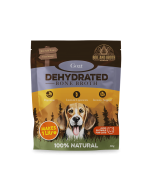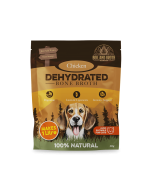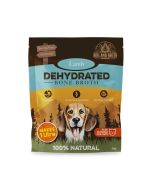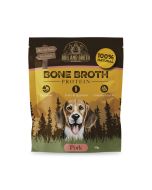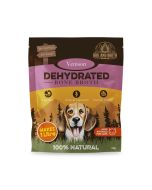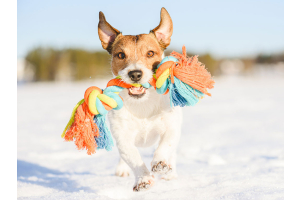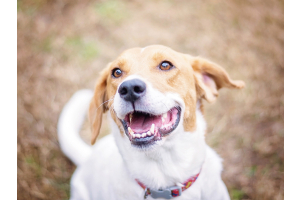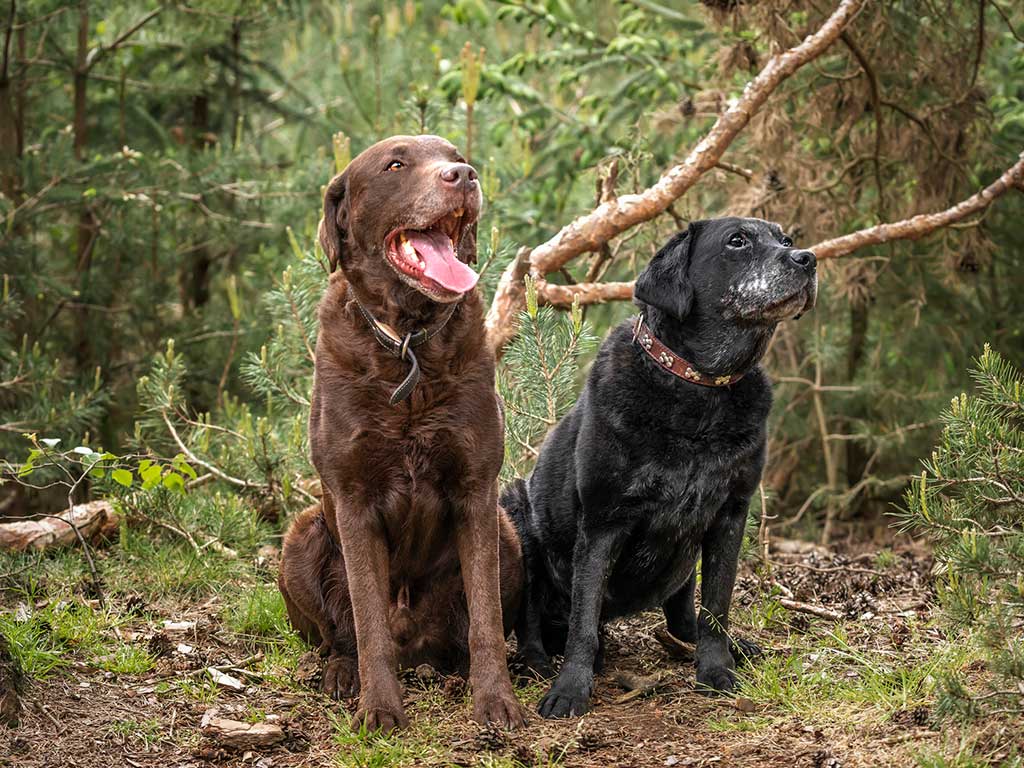
The musculo-skeletal system is comprised primarily of bones, joints, tendons, ligaments, cartilage and muscles. It provides structural support enabling the body to move and these are the parts of the body that can suffer most from mechanical wear and tear, injury and inflammation (Allport, 2010).
Arthritis is the most common cause of chronic pain in pets, affecting as many as 20% of adult dogs (Dodds & Laverdure, 2015).
The typical signs of arthritis include: pain and stiffness (especially after rest), limited mobility such as being hesitant or have trouble jumping up or getting up stairs, running or walking and debilitation in severe or chronic cases.
Osteoarthritis is a slowly progressive disease with different causes that finally come together on the equivalent pathogenic pathway that is typified by characteristic changes in cartilage, subchondral bone, and synovial membrane (Jones, 2014).
Osteoarthritis is characterised by the deterioration of joint (articular) cartilage (the smooth, frictionless covering of the joint), fragments of cartilage are released into the synovial fluid (viscous lubricating liquid found in the joints), fragments disperse back into the cartilage directly destroying the tissue which leads to the formation of compensatory bony outgrowths to try to stabilise the joint ultimately leading to bone rubbing on bone and joint pain….and on this cycle goes (Jones, 2014).
Large-breeds such as Labrador Retrievers, German Shepherds, Great Danes, Rottweilers, Doberman Pinschers, St Bernard’s, Newfoundland’s and Mastiffs may be more prone to developing osteoarthritis because they are genetically predisposed. Also larger breeds generally suffer more arthritis than smaller breeds due to their size and associated increased weight placing additional stress on their joints.
Overweight dogs are also at a higher risk of developing arthritis as they carry more weight than their frame-size, placing increased stress on joints. But new research highlights this is more than wear and tear from this additional weight, there is also an inflammatory connection as fat (adipose tissue) secretes pro-inflammatory cytokines, increasing inflammation in the articular cartilage and an increase in symptoms (Dodds & Laverdure, 2015).
Cartilage is a living tissue providing a relatively frictionless, cushioning surface for the bones to move against each other during movement. Cartilage is made up of a complex matrix comprising collagen, proteoglycans and water.
Glucosamine functions as the primary building block for proteoglycans and the water-binding glycosaminoglycans (GAGs) such as chondroitin. GAGs provide structural support in many areas throughout the body including in tendons, ligaments and cartilage as well as being present in the lubricating synovial fluid. Glucosamine stimulates chondrocytes (the cells found in cartilage) to make proteoglycans and collagen. It also inhibits certain enzymes such as collagenase and phospholipase which destroy cartilage.
With age, the protective membranes and fluids in the joints begin to dry up as GAG production decreases allowing the bones to rub against each other. The body may not be able to replace the lost cartilage fast enough to maintain optimal joint health.
Even a cat as young as aged 8 or a dog just reaching his prime may benefit from support for optimal joint and hip function.
So what can be done to support optimal joint health?
1. Ensure optimum weight to make sure less weight burden on the musculoskeletal system and to decrease systemic inflammation and oxidation associated with OA.
2. Follow an anti-inflammatory diet – ideally gluten and grain free. If you are not feeding appropriately balanced home prepared food, then check the labels of the food you buy and look out for organic, natural, human-grade quality foods and pet treats which are sugar-free and low or devoid of fillers and chemical additives (chemicals can be added for preservation, colour or taste enhancement). These chemical additives can also cause inflammation, allergies and metabolic complications in animals. Also look for gluten and grain free varieties as grains and gluten can promote inflammation.
3. Make bone broth which contains the strengthening nutrients of chondroitin, glucosamine, magnesium and calcium, together with the proteins (including gelatine which has been broken down from collagen) which provide the body with raw materials it needs for healthy bones and joints. We sell a range of bone broths, either in powder form by Boil & Broth or ready made by Karnlea. Or for further information on the benefits of Bone Broth and a recipe, see our blog
4. Consider Functional Foods: There are many functional, nutritional ingredients that can decrease inflammation, detoxify toxins which promote an inflammatory response and support delivery of nutrients to the cartilage and soft tissue around the joint. Examples are detailed below:
- Glucosamine and Chondroitin Sulphate - as detailed above, chondroitin sulphate is a GAG with glucosamine, a glycoprotein is necessary to make GAGs. Chondroitin sulphate works well in combination with glucosamine in many ways: - serving as the building blocks of new joint cartilage, to lessen inflammation, slow the deterioration of cartilage, working in a similar way to non-steroidal anti-inflammatory drugs (NSAIDs) to decrease the production of pro-inflammatory compounds and decreases signs of pain in dogs with OA. These supplements may take a few weeks before any change is noticed.
- Omega-fatty acids – these are very important for any pet with arthritis because of their anti-inflammatory effects. The main omega-3 fatty acids are EPA and DHA which are found in oily fish and other marine sources.
- Curcumin (found in the spice turmeric) - is a powerful antioxidant with strong anti-inflammatory properties which can block inflammatory pathways, effectively stopping the launch of a protein which triggers swelling and pain.5
- Deer Antler powder –is known to help alleviate arthritic symptoms by rebuilding cartilage, improving joint fluid and improving circulation.
- Green Lipped mussel – which is found in the waters of New Zealand gets its name from the green lip along the edge of the shell. In a powdered form, they contain high concentrations of omega-3’s with excellent sources of glucosamine and chondroitin the important building blocks for bone and cartilage. They also contain a variety of minerals (zinc, copper, manganese), antioxidant vitamins (E and C) and the amino acid glutamine.
- Herbs, such as boswellia – is a tree-gum resin which posseses powerful anti-inflammatory, anti-arthritic and analgesic activity, which works well with glucosamine and chondroitin.
References
Alam, M.R., Ji, J.R. Kim, M.S et al. (2011). ‘Biomarkers for identifying the early phases of osteoarthritis secondary to medial patellar luxation in dogs’ J Vet Sci. ; 12(3): pp.273–280. Available at: https://www.healthfulpets.co.uk/ingredients/ingredients-chondroitin
Allport, R. (2010). Heal Your Dog the Natural Way p.106
Dodds, W.J and Laverdure, D.R. (2015). Canine Nutrigenomics, p120-121
Jones, A. T. (2014). Veterinary Secrets: Natural Health for Dogs and Cats p.138, 142
